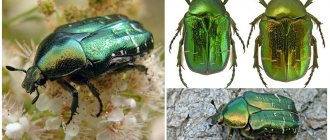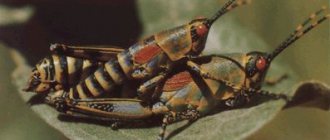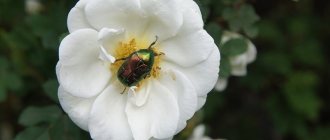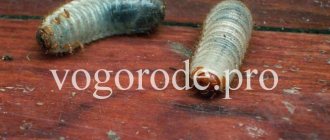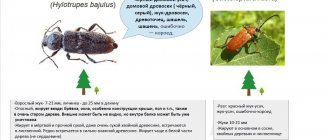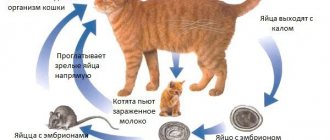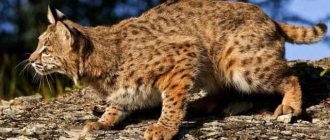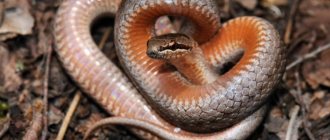A beautiful, golden, shiny, large beetle, even until recently (when there were very few of it) caused delight among flower growers.
But the population of the golden bronze was growing rapidly and the farmers realized that another disaster was approaching.
It is still believed that this species, unlike the hairy bronze, is not so terrible. The beetle comes out of hibernation late. By this time, the trees, as a rule, have faded. However, many crops are still in the flowering phase. Flower growers are also in panic; the beetle eats everything. How to deal with bronze grass, which eats the flowers of all the green spaces on the estate? Let's figure it out.
Description of species
Bronze beetles are beetles from the lamellar family. Many species in this group are brightly colored and also have a metallic sheen. This insect is often confused with the common cockchafer. Known types of bronzes: golden, copper, green.
Golden bronze
This is a fairly large beetle. Its oblong, oval body can reach 22.5 mm in length. The upper part of the body is most often covered with hairs, but completely naked individuals are also found. When examining the bronze from above, the golden-green color is clearly visualized. Entomologists also note the presence of a copper-red tint with a metallic sheen.
The beetle's diet includes flowers of wild or cultivated plants. But at the same time, golden bronze usually does not cause serious harm to gardening.
Copper bronze
This is a beetle whose body length reaches 16-25 mm. The body is narrow, slightly convex and slightly narrowed backward. The head is covered with numerous large dots. The upper side of the body is smooth, shiny with an emerald, bluish, olive or reddish-greenish tint. The head is relatively light with a copper-violet tint.
Green bronze
Insects are divided into large and small. The large green bronze beetle is listed in the Red Book of the Russian Federation. The body of the green lesser bronze reaches a length of 18-20 mm. The pest has wings, green limbs, and elytra that resemble a shield. Insects are especially active when the sun shines brightly, and at night the ground becomes their home.
Biological features
There are many bronzes. The family has more than 4 thousand species.
The most common in mid-latitudes are:
- golden;
- shaggy (shaggy deer);
- marble;
- Shamilya;
- Smelly;
- Goliath.
All pests belong to:
- class - insects;
- order - Coleoptera (beetles).
Golden bronze is common in areas where there are trees and shrubs. Residents of steppe regions may not even be aware of the misfortune. However, where there are ravine forests (trees growing on the slopes of ravines and ravines), it has found its place of residence in the south.
Food preferences
The harm this insect causes becomes clear from what the bronzeback eats.
Pest food preferences:
- flowers (especially light ones);
- young fruits;
- ovary of plants or fruits;
- first leaves.
The beetles completely eat up the stamens and pistils, so sexual reproduction of seed plants becomes impossible, and the yield sharply decreases. It is not surprising that gardeners and gardeners are looking for effective ways to deal with bronzes.
If the bronze fly gets into the house, then its food becomes indoor plants.
What are the elimination methods?
No chemical treatment is used as such. The insect flies quickly and the use of solutions will be ineffective. The safest and most effective method is manual processing. The beetles are collected and destroyed independently. It is permissible to spray the plant with ice water in advance. This will stun the insect.
The use of light traps is acceptable. Used at night. To create it, you need to place the lamp in a glass container, and next to it a container with kerosene. The pests will hit the glass and fall into the liquid and die.
Spray the plants with onion tincture. Beetles cannot tolerate strong aroma. This will help prevent insect infestations. Additionally, birds that destroy bronze birds should be attracted to the site.
Harm from larvae
After fertilization, the female lays one egg at a time (rarely 2-3) in the soil or old tree stumps. The bronze larva appears after 2-3 weeks. For 2 months they feed on dead roots or other plant debris, which at that time are decomposing in the soil.
At this stage of development, the pest is not dangerous, but even useful. The larva constantly eats, crushing plant debris that is already partially destroyed by putrefactive processes. In this way, it accelerates the decomposition of solid particles, which would remain intact for a long time.
Benefit
As for the larvae of bronze beetles, they do more good than harm, since their diet includes already decomposing wood debris and dry plant roots. The larvae process them, accelerating decay.
The larvae of bronze beetles are very similar in appearance to the larvae of the May beetle (Khrushchev). There are differences, of course, but they won’t tell much to novice summer residents. The main thing to understand is that the larvae of bronze moths do not feed on living plants , and they can often be found in compost heaps. Their benefit is that they help decompose dead organic matter.
Their powerful jaws continuously crush coarse organic fibers and, passing through the digestive tract, the substrate is also enriched with the feces of beetle larvae. As a result, they help increase soil fertility. Many summer residents specially collect such larvae and carefully take them into the compost, because during their development cycle they chew a lot of organic matter.
How to deal with bronze
There are many ways to effectively combat golden bronze and other species of this family. Each gardener or florist selects his own optimal option.
Manual collection
Pests are collected in the morning, when the beetles sit motionless on the flowers. Shake the insects into a bag or onto a cloth/oilcloth spread under the plants. The collected bronzes are destroyed mechanically. This method justifies itself when there are a small number of pests in the garden. If more than 10-15 pieces have affected one plant, then urgent measures are taken before the insects spread further throughout the garden plot.
Chemical soil treatment
Pests feed during the day and go to the ground at night. In the evening, using insecticides of contact and intestinal action (Diazinon, Bazudin, Diazol), water the soil around the damaged plants. Use such an amount of the product that it penetrates 3-5 cm into the ground. Bronzeworts that come into contact with the poison die.
Popular spraying products: Aktara, Contract Plus, Confidor Extra, Senpai, Akarin. Treatment is carried out in the evening, when the sun sets, since beneficial insects are already resting at this time. Spraying is done once a week. Usually it is enough to repeat the manipulation 2 times. This allows you to get rid of bronze marks for a while. After 2-3 weeks, new pests arrive, so the treatment is repeated.
Do not use insecticides for spraying during the day, as this provokes the death of beneficial pollinating insects. If neighbors have an apiary, they are warned about the planned spraying of the plants.
Traditional methods
Some people prefer to fight bronzing with folk methods:
- Infusion of celandine. To prepare it, 100 g of dry grass is poured into 1 liter of boiling water. Keep the product in a dark place for 24 hours. After filtering, the infusion is used for spraying.
- Infusion of horse sorrel. To prepare, take 30 g of sorrel roots, previously crushed, which are poured with a liter of boiling water. Leave for 2-3 hours, filter, and then spray the affected plant once every 5 days.
- Wood ash. 15 g of ash are dissolved in 5 liters of water. Infuse the product for 1-2 days. Add 25 g of laundry soap, previously crushed on a fine grater, to the solution. Spraying procedures are carried out once every 5 days.
Since bronze beetles fly into bright light in the evenings, some use light traps to combat them. Other flower lovers have noticed that liquid smoke repels harmful insects well. Dissolve 45 ml of flavoring in 10 liters of water, as well as 50 g of dark laundry soap. This product does not wash off from plants for a long time, even during rains.
How to deal with bronzovkas is decided by the owners of their personal plots, depending on the severity of the problem. In some cases, these beetles only occasionally fly into beds or flower beds, so there is no need to mercilessly destroy them.
What a lifestyle
The bronze dog leads an active lifestyle only during the daytime. The insect loves sunny heated areas. The drier the weather, the more comfortable the beetle. The representative is massive and prefers to move around as little as possible.
Often the beetle collides with other objects. After falling on its back, the insect often dies under human feet. To restore balance, the bronzefish needs to flounder in the dust for a long time.
We invite you to familiarize yourself with the Features of pain in the heart area (cardialgia): what could it be and what to do?
The beetle spends its energy sparingly. Selects plants where you can stay for as long as possible to minimize movement. In cloudy weather they do not leave the shelter.
At night they are localized on the ground. They also overwinter in the ground. Years last 3 months, less often – 4.
Where do they spend the winter?
Bronze beetles overwinter in heaps of humus, as well as in anthills. That is why many forest animals (foxes, badgers and others) dig anthills in winter in search of delicious high-calorie larvae. By the way, the larvae themselves are absolutely harmless to the garden and even do useful work, effectively processing the substrate.
General characteristics of beetles
The body is short. The rear line is almost straight. The transitions from the back to the sides are rounded. The head is small, directed down and forward. This family is called lamellar because of the special structure of the antennae, which, if necessary, the insect unfolds into a fan of plates.
This success in bronzebacks is due to the special structure of the elytra: there are small cutouts on the sides between the abdomen and the rigid plate. Through them, insects release translucent brown wings. The elytra remain folded and do not slow down the bronco. Other beetles are forced to open their elytra, which stick out upward and to the sides during flight and greatly interfere with flight.
Insect development cycle
So, as already mentioned, larvae emerge from the egg. They have a fairly large body, curved in the shape of the letter “c”. It has yellow and white colors. The larva is covered with small hairs and has short legs. She feels great in a warm place where she can eat. That is, it can often be found in manure or rotten wood. Please note that before becoming a pupa, the larva sheds its skin several times.
The second period of development occurs in the same area in which the larva lived. That is, this is where the pupa appears. It already has outlines similar to the image of an adult beetle. This period of insect development lasts relatively short, only 14 days.
The female can lay eggs at any time of the year. The duration of the full development cycle depends on this.
LiveInternetLiveInternet
–Categories
- cottage (109)
- vegetables (21)
- pests, diseases (15)
- flowers (14)
- do it yourself (12)
- berries (11)
- soil, acidity, fertilizers, lawn (8)
- construction (7)
- medicinal plants, herbs (7)
- books, TV (4)
- inventory, furniture (4)
- for home (83)
- kitchen (20)
- ideas (11)
- repair (8)
- children's (6)
- bath (4)
- living room (3)
- textiles (3)
- office, place (2)
- bedroom (2)
- balcony (2)
- wardrobe (1)
- cooking (79)
- baked goods (28)
- winter preparations (25)
- snacks, salads, sandwiches (5)
- seasonings (4)
- drinks (3)
- fish (2)
- unusual (61)
- crafts, needlework (47)
- TV series (47)
- documentary (39)
- library (38)
- cooking (5)
- for diary (34)
- take care of your health (31)
- hair (6)
- astronomy (29)
- history of Russia (26)
- knitting (23)
- children (23)
- cities and countries. (23)
- Samara (10)
- music (21)
- History (17)
- painting (16)
- flora,fauna (13)
- chemistry (11)
- holidays (8)
- poetry (8)
- food (6)
- legends, myths (6)
- auto (5)
- ZhZL (4)
- games (2)
- repair (1)
- Sergey Grishunov (1)
- performances (1)
